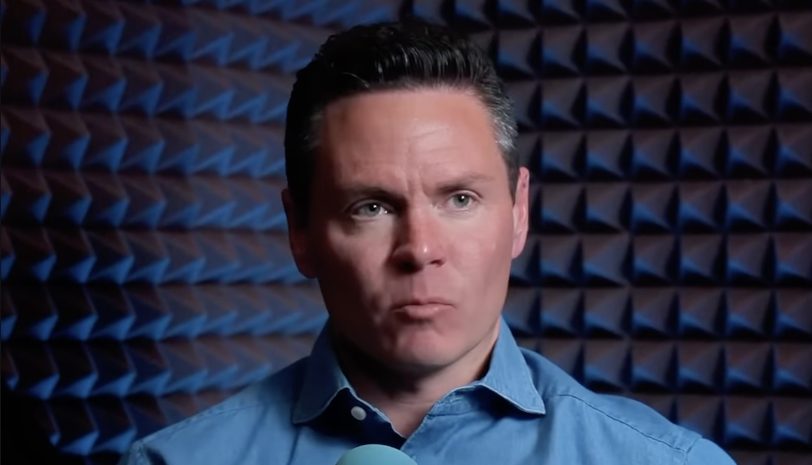Trust is often misunderstood as blind faith in someone’s reliability or honesty. However, a deeper examination reveals that genuine trust involves accepting people for who they consistently show themselves to be, not who we wish they were.
When we examine relationships that have gone sour, we often hear phrases like “I trusted them and they betrayed me.” But was this truly a betrayal, or was it simply a person acting according to their established pattern of behavior that we chose to ignore?
The Reality of Trust
Genuine trust isn’t about expecting someone to meet our idealized standards. Instead, it’s about recognizing and accepting the patterns people have already demonstrated. If someone has repeatedly shown dishonesty, trusting them means acknowledging their tendency to lie, not expecting sudden truthfulness.
Trust is about seeing people clearly for who they are, not who we want them to be. This perspective shift changes how we approach relationships and protects us from unnecessary disappointment.
When someone has shown a pattern of unreliability, trusting them doesn’t mean expecting them to be reliable. Instead, it means accepting that unreliability is part of who they are. This acceptance allows us to make informed decisions about how much we invest in the relationship.
Self-Betrayal: The Real Problem
The most damaging aspect of broken trust often isn’t what others do to us—it’s what we do to ourselves. When we ignore clear patterns of behavior, we set ourselves up for disappointment. The betrayal we feel comes not from others acting out of character, but from our refusal to accept what we already know.
Consider these common scenarios of self-betrayal:
- Continuing to share secrets with someone who has repeatedly gossiped
- Lending money to someone who has never paid back previous loans
- Expecting emotional support from someone who has consistently shown emotional unavailability
- Believing promises from someone with a history of breaking them
In each case, the pain comes not from the other person’s actions, but from our refusal to accept the pattern they have established.
Patterns Reveal Truth
People’s patterns of behavior represent their most honest communication. While words can deceive, consistent behavior over time rarely lies. When someone shows you who they are repeatedly, that pattern becomes the most reliable indicator of who they truly are.
A person’s pattern is their truth—the most authentic expression of their character and values. By accepting this reality, we can make choices that protect our well-being while still being authentic with others.
This doesn’t mean writing people off entirely. Instead, it means calibrating our expectations and boundaries based on demonstrated behavior, rather than promises or potential.
Practical Application
Applying this understanding of trust requires self-awareness and honesty. Here are the key steps to practice this more authentic form of trust:
- Observe patterns without judgment
- Accept those patterns as information about who someone is
- Adjust your expectations accordingly
- Set boundaries that protect you while allowing the relationship to exist on honest terms
This approach doesn’t mean becoming cynical. Instead, it allows for more authentic connections based on reality rather than wishful thinking.
The Freedom in Acceptance
There’s remarkable freedom in accepting people as they are. When we stop expecting someone to be different from who they’ve consistently shown themselves to be, we release the frustration of unmet expectations.
This acceptance doesn’t mean approving of harmful behavior or staying in damaging relationships. Instead, it means making clear-eyed decisions about engagement based on reality rather than fantasy.
The most profound trust we can develop is trust in ourselves—in our ability to see clearly, accept reality, and make choices that honor our well-being while still engaging with the world honestly.
Frequently Asked Questions
Q: Does this mean I should stop giving people second chances?
Not necessarily. Second chances can be valuable, but they should be given with clear eyes about the patterns you’ve observed. The key is to adjust your expectations based on past behavior rather than hoping for a complete personality change. Consider what specific circumstances might warrant another opportunity while maintaining appropriate boundaries.
Q: How can I tell the difference between a pattern and a one-time mistake?
Patterns emerge over time through repeated behaviors. A one-time mistake doesn’t establish a pattern, but how someone responds to their mistake can be revealing. Watch for accountability, genuine efforts to change, and consistency over time. Everyone makes mistakes, but patterns show up in how frequently similar behaviors occur and how the person responds when confronted.
Q: Isn’t it pessimistic to expect people to continue negative behaviors?
This approach isn’t about pessimism—it’s about realism. People can and do change, but meaningful change typically happens slowly and requires consistent effort. Accepting someone’s current patterns doesn’t mean believing they’re incapable of growth. It simply means you’re making decisions based on who they are now, not who they might become someday.
Q: How do I apply this concept without becoming cynical about relationships?
Focus on accepting reality rather than judging it. This perspective actually allows for deeper connections because it removes the disappointment of unmet expectations. By seeing people clearly, you can appreciate their positive qualities while protecting yourself from their limitations. This balanced view fosters authentic relationships based on who people really are, not idealized versions of them.







